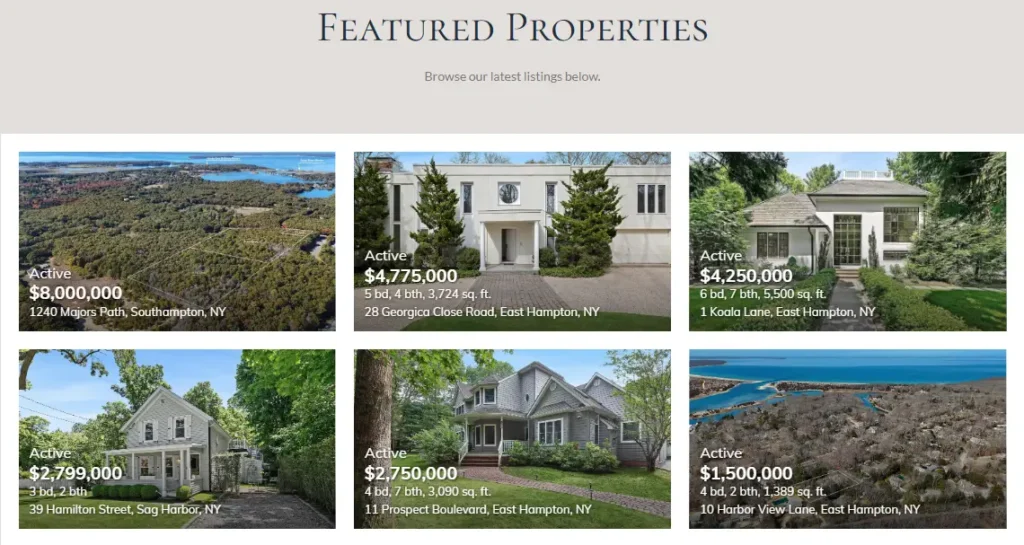The Hamptons, a series of beach villages and hamlets along Long Island’s South Fork, are a dual symbol of history and luxury. Initially, the area was a witness to the rising spirit of American democracy, beginning with the 1640 settlement of Southampton, which created an independent community. Over time, it transformed into a private enclave for the elite, symbolizing wealth and the stratification of power in American society. This complex history makes the Hamptons an interesting reflection of the nation’s balancing act between egalitarianism and entrepreneurial achievement. Let’s take a closer look at how the region developed over the centuries, from humble beginnings to becoming home to the nation’s “old money” elite.
The Early Days: Before the Elite Arrived
Centuries ago, the region now known as the Hamptons was just a group of small, peaceful villages. The American Revolution did not diminish the area’s charm; instead, it became a sanctuary for those seeking escape from the war’s devastation. Early settlers, both Anglo colonists and native peoples, lived in a delicate balance, with figures like Lion Gardiner shaping the land’s future.
The region’s quiet existence was broken by the construction of the Montauk Lighthouse in 1796, marking a new era. Despite the decline of whaling in Sag Harbor by 1871, the Hamptons’ rural beauty remained untouched.
The Turn of the Century: A Growing Cultural Landscape
By the early 20th century, the Hamptons began to attract development and wealth. The Maidstone Club’s founding in 1891 and the arrival of the Long Island Rail Road in 1895 set the stage for the region’s transformation into a luxury enclave.
However, it wasn’t until the 1950s and 1960s that the Hamptons became a cultural hub. Artists like Jackson Pollock, Lee Krasner, and Willem de Kooning moved to the area, finding inspiration in its natural beauty and peaceful surroundings. The Hamptons had become a sanctuary for creative minds, blending art with history.
1. The 1950’s and 1960’s: A Creative Haven
During the 1950s and 1960s, the Hamptons blossomed into a cultural hub. The Guild Hall Exhibition in 1949, which featured works by Jackson Pollock, Lee Krasner, and Balcomb Greene, marked the beginning of the Hamptons’ reputation as a center for avant-garde art. Although some locals protested the “bohemian” culture surrounding the art scene, the creative wave could not be stopped.
For many artists, the Hamptons became a sanctuary from the relentless pace of city life. Jackson Pollock, Lee Krasner, and Willem de Kooning, among others, called the Hamptons home during this period, transforming the area into a lively and vibrant artistic community.
2. The 1970’s: From Bohemian to Luxury
The 1970s saw the Hamptons transition from a bohemian retreat to a luxury haven. This shift was embodied by the Bouvier Beale family, whose eccentric lifestyle was immortalized in the documentary Grey Gardens. As the documentary gained cult status, it highlighted the contrast between the Hamptons’ bohemian roots and its emerging luxury culture. The 1970s also saw the rise of disco and the “me decade,” where exclusivity and wealth became the defining traits of the Hamptons.
The Hamptons became a sanctuary for New York’s aristocracy, and the once simple, bohemian nature of the area began to fade, making way for luxury estates and private clubs.
3. The 1980’s: Excess and Opulence
The 1980s marked the peak of opulence in the Hamptons. The region saw an influx of new wealth, fueled by the economic boom of the Reagan years. Celebrities like Steven Spielberg, Kim Basinger, Alec Baldwin, and Calvin Klein built lavish mansions, earning the Hamptons the moniker “Hollywood East.” Elite social gatherings and charity events became a staple of the Hamptons social calendar.
The construction boom of the 1980s led to the transformation of the Hamptons’ rural landscape. Old potato fields were replaced by luxury homes, and the area saw the arrival of upscale retailers and gourmet food stores. Despite the influx of wealth, the Hamptons continued to hold onto its charm, attracting the elite to its beautiful shores. Hamptons was not lost, though, as the area continued to attract the wealthy and famous to its shores.
4. The 1990’s: A Return to Simplicity and Natural Beauty
The 1990s brought a renewed appreciation for the Hamptons’ rural charm. Artists, authors, and actors sought refuge in the area, reconnecting with the simplicity of its past. At the same time, the region saw a rise in farm-to-table dining, with local restaurants like Nick & Toni’s embracing fresh, local ingredients.
Cultural preservation also became a priority, with the restoration of key historical sites such as the Sag Harbor Whaling & Historical Museum and Guild Hall, reinforcing the area’s creative spirit.
5. The New Millennium: Ultra-Wealth and Exclusivity
The early 21st century saw an influx of ultra-wealthy residents, including tech moguls and global oligarchs, further transforming the Hamptons into a hub of luxury and exclusivity. This wave of affluence led to the construction of even more opulent homes and estates, setting the stage for a new era of excess.
By the 2010s, the Hamptons had become a destination for the world’s elite, with luxury shopping, high-profile parties, and A-list galas marking the region’s social calendar. However, the influx of wealthy residents also caused a rift between the local population and the ultra-wealthy, making it clear that the Hamptons were no longer the secluded retreat they once were.
Conclusion: Evolving Through the Decades
Over the years, the Hamptons have transformed from an isolated retreat for artists and bohemians to a hub of wealth, luxury, and exclusivity. While the area has seen its fair share of challenges, it continues to embody the American dream, blending history, art, and opulence into one iconic destination. The Hamptons’ history is a reflection of the country’s evolving social and economic landscape, making it a fascinating symbol of both achievement and change.






